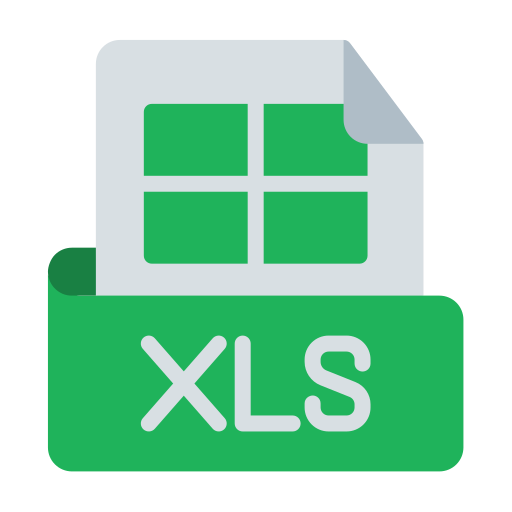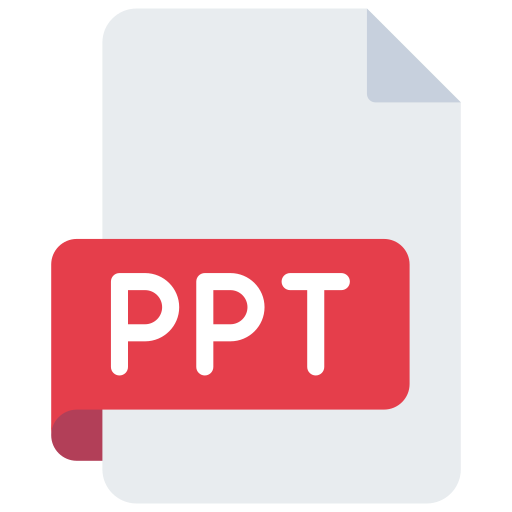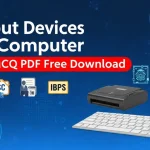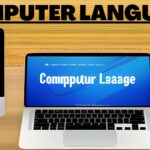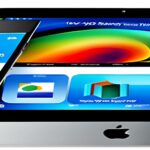Q1901. A __________ is approximately one billion bytes.
(a) kilobyte
(b) bit
(c) gigabyte
(d) megabyte
(e) byte
Ans: (c) A gigabyte is equal to approximately one billion bytes (1000000000bytes). It is a unit of computer memory or data storage capacity. The usual meaning of the prefix giga- is one billion.
Computer Knowledge Question Bank for Competitve Exams
________________________________________
Q1902. Servers are computers that provide access to other computers connected to a
(a) Supercomputer
(b)Mainframe
(c) Network
(d) Client
(e)Workstation
Ans: (c) A server is a computer that provides data to other computers connected through a network. It may serve data to systems on a local area network (LAN) or a wide area network (WAN) over the Internet. The purpose of a server is to share data as well as to share resources and distribute work in a network.
Computer Knowledge Question Bank for Competitve Exams
________________________________________
Q1903. ______ controls the way in which the computer system functions and provides a means by which users can interact with the computer.
(a) Motherboard
(b) Operating system
(c) Platform
(d) Application software
(e) Cookies
Ans: (b) An operating system is a collection of system programs that controls and co-ordinates the overall operations of a computer system. It provides an interface for the user to interact with the computer. Some of the common operating system include: Windows, Mac, Android, Linux, etc.
Computer Knowledge Question Bank for Competitve Exams
________________________________________
Q1904. What is the full form of PDF?
(a) Performable Document Format
(b) Portable Document Format
(c) Portable Deformed Format
(d) Performable Deformed Format
(e) Portable Distributed Format
Ans: (b) PDF stands for Portable Document Format. It is a file format used to present documents in a manner independent of application software, hardware, and operating systems. Invented by Adobe, PDF is now an open standard maintained by the International Organization for Standardization (ISO).
Computer Knowledge Question Bank for Competitve Exams
________________________________________
Q1905. You have a spreadsheet under the name “MathResutts”. You made changes to it and want UIICL AO EXAM MODEL SOLVED PAPER to save it while maintaining a copy of the original spreadsheet, what do you do?
(a) Click “Save” in the file menu
(b) Click the icon
(c) Click “Save As” in the file menu
(d) Used the shortcut CTRL/S
(e) Use the shortcut CTRL/V
Ans: (c) Choosing “Save” simply saves our work by updating the last saved version of the file to match the current version we see on our screen. However, choosing “Save As” brings up a prompt to save the same work as a file with a different name. It allows us to save our file at different stages and keep multiple versions of the same on our hard drive.
Computer Knowledge Question Bank for Competitve Exams
________________________________________
Q1906. The ability to recover and read deleted or damaged files from a criminals computer is an example of a law enforcement specialty called
(a) animation
(b) simulation
(c) robotics
(d) computer forensics
(e) cryptography
Ans: (d) The ability to recover and read deleted or damaged files from a criminal’s computer comes under computer forensics. It is used for fighting hightech crimes. It involves the application of computer systems and techniques to gatherpotential legal evidence.
Computer Knowledge Question Bank for Competitve Exams
________________________________________
Q1907. The steps and tasks needed to process data, such as responses to questions or clicking an icon, are called
(a) operating system
(b) instructions
(c) application software
(d) system unit
(e) part programming
Ans: (b) In computer science,the steps and tasks needed to process data, such as responses to questions or clicking an icon are known as instructions. An instruction is an order given to a computer processor by a computer program. At the lowest level, each instruction is a sequence of 0s and 1s that describes a physical operation the computer is to perform.
Computer Knowledge Question Bank for Competitve Exams
________________________________________
Q1908. The set of instructions that tells the computer what to do is
(a) Software
(b) Softcopy
(c) Hardware
(d) Hardcopy
(e) Softcopy
Ans: (a) Software refers to a set of instructions that tell a computer what to do. Software comprises the entire set of programs, procedures, and routines associated with the operation of a computer system. A set of instructions that directs a computer’s hardware to perform a task is called a program, or software program.
Computer Knowledge Question Bank for Competitve Exams
________________________________________
Q1909. All of the following are examples of real security and privacy risks except
(a) Spam
(b) Hackers
(c) Viruses
(d) Identify theft
(e) Phishing
Ans: (a) Spam is usually considered to be electronic junk mail or junk newsgroup postings. Some people define spam even more generally as any unsolicited email.In addition to wasting people’s time with unwanted email, spam also eats up a lot of network bandwidth.
Computer Knowledge Question Bank for Competitve Exams
________________________________________
Q1910. URL is an acronym for ____
(a) Uniform Resource Link
(b) Uniform Resource Locator
(c) Unique Resource Link
(d) Unique Resource Locator
(e) Universal Resource Location
Ans: (b) URL stands for Uniform Resource Locator. It is a reference (an address) to a resource on the Internet. A typical URL could have the form http:// w w w . e x a m p l e . c o m / index.html, which indicates a protocol (http), a hostname (www.example.com), and a file name (index.html).
Computer Knowledge Question Bank for Competitve Exams
________________________________________
Q1911. Which of the following is a valid IP address?
(a) 192.168.1.1
(b) 192.168.111.1111
(c) 192.168.900.1
(d) 192.900.168.1
(e) 192.111.111.900
Ans: (a) The format of an IP address is a 32-bit numeric address written as four numbers separated by periods. An IP address consists of four numbers, each of which contains one to three digits, with a single dot (.) separating each number or set of digits. Each of the four numbers can range from 0 to 255.
Computer Knowledge Question Bank for Competitve Exams
________________________________________
Q1912. Verification of a login name and password is known as
(a) Accessibility
(b) Configuration
(c) Authentication
(d) Logging In
(e) Other than those given as options
Ans: (c) Authentication is a verification process in which the credentials provided are compared to those on file in a database of authorized users’ information on a local operating system or within an authentication server. This is done by verification of a login name and password. If the credentials match, the process is completed and the user is granted authorization for access.
Computer Knowledge Question Bank for Competitve Exams
________________________________________
Q1913. ‘Bluetooth’ technology allows
(a) wireless communication between equipments
(b) satellite communication
(c) signal transmission on mobile phones only
(d) landline phone to mobile phone communication
(e) data modification on mobile phones only
Ans: (a) Bluetooth technology supports short distance wireless communication between a variety of electronic equipments. It is actually a short-range radio technology that does not need any cable or manual interference directly.
Computer Knowledge Question Bank for Competitve Exams
________________________________________
Q1914. The process of transferring files from a computer on the internet to your computer is called
(a) Forwarding
(b) Uploading
(c) FTP
(d) Downloading
(e) Browsing
Ans: (d) Download refers to the process of transferring files from a computer on the Internet to our own computer. Downloading generally transfers entire files for local storage and later use, as contrasted with streaming, where the data is used nearly immediately, while the transmission is still in progress, and which may not be stored long-term.
Computer Knowledge Question Bank for Competitve Exams
________________________________________
Q1915. Data that are accumulated and processed in group are called __________.
(a) Batch Processing
(b) Group Processing
(c) Time Sharing
(d) Process Planning
(e) Other than those given as options
Ans: (a) In computer and data processing systems, batch refers to an accumulation of data to be processed. Batch processing is a form of data processing in which a number of input jobs are grouped for processing during the same machine run.
Computer Knowledge Question Bank for Competitve Exams
________________________________________
Q1916. In computing, 1 nibble is equal to
(a) 8 bits
(b) 4 bytes
(c) 2 bits
(d) 4 bits
(e) 2 bytes
Ans: (d) In computers and digital technology, a nibble is four binary digits or half of an eight-bit byte. In other words, it is four bits or half of a byte.Four-bit computer architecture was used in early microprocessors, pocket calculators and pocket computers.
Computer Knowledge Question Bank for Competitve Exams
________________________________________
Q1917. The part of CPU which coordinates all functions of computer and other components is
(a) Coordination Board
(b) Mother Board
(c) Control Unit
(d) ALU
(e) None of these
Ans: (c) The control unit (CU) is a component of a computer’s central processing unit (CPU) that directs the operation of the processor. It acts as a central nervous system for the other components of the computer. It manages and coordinates the entire computer system. It obtains instructions from the program stored in main memory, interprets the instructions, and issues signals that cause other units of the system to execute them.
Computer Knowledge Question Bank for Competitve Exams
________________________________________
Q1918. Which among the following is not a mobile Operating System?
(a) Safari
(b) Bada
(c) Symbian
(d) MeeGo
(e) WebOS
Ans: (a) Safari is a web browser developed by Apple based on the WebKit engine. It is the default browser on Apple devices. Other popular web browsers are Google Chrome, Microsoft Edge (preceded by Internet Explorer), Opera and Firefox.
Computer Knowledge Question Bank for Competitve Exams
________________________________________
Q1919. Disk Operating System (DOS) was designed to work with which of the following input device ?
(a) Keyboard
(b) Mouse
(c) Joystick
(d) Xbox
(e) Printer
Ans: (a) DOS uses a command line, or text-based interface, that allows the user to type commands. DOS was designed for three standard devices: one for input, one for output and one for errors. The main input/ output device is the console which is DOS’s name for keyboard and screen. The keyboard is the standard input device, and the display is the standard output and error device. Price : 595 SALIENT FEATURES v A sincere attempt to use reader friendly lucid language to make understanding easy. v Teach yourself approach adopted in shaping this book. v A pious effort to put simple solutions and much needed time-saving methods. v A long list of chapters and a wide variety of questions. v Special emphasis on concept-building as reasoning is a special kind of thinking. v Detailed discussion on basic concepts of each topic. v Fundamental concepts illustrated through upgraded questions. v Problem solving techniques through MCQs. v Large number of Multiple Choice Questions (more then 7000) with detailed explanations. v Exercises with a plenty of questions asked in various competitive exams with proper highlight of name of exam and year. v Illustration of more than one method solution to many questions. v Distribution of each exercise in differently oriented categories/sections. v Model Practice Sets for various exams. v Select questions asked in previous exams concerned in each set. v Enriched concepts on principles of logic to distinguish correct from incorrect reasoning and examine fallacies; Unique tricks for solving questions on Input.
Computer Knowledge Question Bank for Competitve Exams
________________________________________
Q1920. The basic unit of a worksheet into which you enter data in Excel is called a
(a) table
(b) cell
(c) box
(d) column
(e) row
Ans: (b) A cell is the basic unit of a worksheet into which we enter data in Microsoft Excel. The worksheet is organized into a rectangular grid containing vertical columns and horizontal rows. The intersection of each column and row is a cell.
Computer Knowledge Question Bank for Competitve Exams
________________________________________
Q1921. The basic operations performed by a computer are
(a) Logical operation
(b) Arithmetic operation
(c) Storage and relative
(d) All of the above
(e) None of these given as options
Ans: (d) The computer performs five basic operations to carry out any task: Input, Process, Output, Storing and Controlling. It provides inputs (the process of entering data and instructions into the computer system); saves data and instructions to make them readily available for initial or additional processing, as and when required; performs arithmetic operations or logical operations on data to convert them into useful information; provides output (useful information or results for the user) and directs the manner in which all operations are performed.
Computer Knowledge Question Bank for Competitve Exams
________________________________________
Q1922. Which among the given options is IBM’s Supercomputer?
(a) SunwayTaihu Light
(b) Tihane-2
(c) Watson
(d) Shasra-T
(e) Brain
Ans: (c) Watson is an IBM supercomputer that combines artificial intelligence (AI) and sophisticated analytical software for optimal performance as a “question answering” machine. The supercomputer is named for IBM’s founder, Thomas J. Watson. It processes at a rate of 80 teraflops (trillion floating-point operations per second).
Computer Knowledge Question Bank for Competitve Exams
________________________________________
Q1923. The principle that Internet service providers enable access to all content and applications regardless of the source, and without favoring or blocking particular products or websites is known as
(a) Public utility
(b) Net neutrality
(c) Non-throttling principle
(d) Usage sans barriers
(e) None of these given as options
Ans: (b) Net neutrality is the principle that individuals should be free to access all content and applications equally, regardless of the source, without Internet Service Providers discriminating against specific online services or websites. The term was coined by Columbia University media law professor Tim Wu in 2003, as an extension of the longstanding concept of a common carrier, which was used to describe the role of telephone systems.
Computer Knowledge Question Bank for Competitve Exams
________________________________________
Q1924. What does UNIVAC stand for?
(a) Universal Array Computer
(b) Universal Automatic Computer
(c) Unique Automatic Computer
(d) Unvalued Automatic Computer
(e) None of these given as options
Ans: (b) UNIVAC stands for UNIVersal Automatic Computer. It is the name of a line of electronic digital stored-program computers starting with the products of the Eckert-Mauchly Computer Corporation.The UNIVAC I was the first commercial computer produced in the United States.
Computer Knowledge Question Bank for Competitve Exams
________________________________________
Q1925. Online credit card transactions involve which type of processing?
(a) Batch processing
(b) Instant processing
(c) Manual processing
(d) Transaction processing
(e) None of these given as options
Ans: (a) Online credit card transactions eitherinvolve real time processing or batch processing. Real time credit card processing is the faster of the two options and is usedin electronic payment gateways. Batch processing, in which many transactions is sent and then processed as a whole, is common in billing and bill payment. It allows merchants to track multiple transactions together. Unlike real time processing that deals with individual transactions as they occur, batch processing typically takes place at the end of the business day.
Computer Knowledge Question Bank for Competitve Exams
________________________________________
Q1926. Which among the following is the smallest unit in an image in a computer screen? (MAIN EXAM)
(a) Pixel
(b) Unit
(c) Array
(d) Resolution
(e) Clip
Ans: (a) The pixel, literally meaning, “picture element”, is the smallest unit of graphical information on a computer screen that can be manipulated to display a specific color or value. A single pixel is composed of up to three rays of light, red, blue, and green, blended into a single dot onscreen. A computer monitor displays type and images by lighting up various combinations of pixels.
Computer Knowledge Question Bank for Competitve Exams
________________________________________
Q1927. Which company first invented MODEM?
(a) AT&T
(b) IBM
(c) Microsoft
(d) Seagate
(e) Betel
Ans: (a) It was in 1962 that the first commercial modem, the Bell 103, was released by AT&T.Bell 103 was also the first modem with full-duplex transmission, frequency-shift keying or FSK, and had a speed of 300 bits per second or 300 bauds. Bell 103 was followed by Bell 212, which reached speeds of 1200 bits per second.
Computer Knowledge Question Bank for Competitve Exams
________________________________________
Q1928. Which of the following function keys serves as the keyboard shortcut for Rename of File?
(a) F2
(b) F1
(c) F6
(d) F9
(e) F12
Ans: (a) The F2 key is used for renaming a file. In Windows when we select a file and press the F2 key, we can instantly rename the file without having to go through the context menu.
Computer Knowledge Question Bank for Competitve Exams
________________________________________
Q1929. Under which tab of Microsoft Word is Spell Check feature available?
(a) Layout
(b) Review
(c) Design
(d) View
(e) File
Ans: (b) The Spell Check feature is found under Review tab of Microsoft Word. It scans the text and extracts the words contained in it and then compares each word with a known list of correctly spelled words (i.e. a dictionary). It flags words in a document that may not be spelled correctly. It is used for error free document production.
Computer Knowledge Question Bank for Competitve Exams
________________________________________
Q1930. The two major types of computer chips are
(a) Primary memory chip
(b) External memory chip
(c) Microprocessor chip
(d) Both b and c
(e) All of the above given as options
Ans: (d) Computer chips are tiny pieces of material, typically silicon, that contain an electronic circuit. The two major types of computer chips are microprocessors, which carry out the instructions of a computer program, and memory chips, which hold programs and information. Microprocessor chips are used in computers, video games, etc; memory chips fall into two categories: Read Only memory (ROM) and RAM (Random Access Memory).
Computer Knowledge Question Bank for Competitve Exams
________________________________________
Q1931. Verification of login name and password is known as
(a) Accessibility
(b) Configuring
(c) Authentication
(d) Logging
(e) Certification
Ans: (c) The verification of login name and password is known as authentication. It involves the prevention of unauthorized access to computer systems. It takes a variety of forms, ranging from verifying account credentials (using a login name and password) to physical identity verification (using biometrics such as finger print scanner technology) to identifying that the client system from which a user attempting to connect to a server is really the authorized client system.
Computer Knowledge Question Bank for Competitve Exams
________________________________________
Q1932. In which network are both LAN and MAN present?
(a) WLAN
(b) CAN
(c) SAN
(d) WAN
(e) TAN
Ans: (d) A wide area network (WAN) is a telecommunications network or computer network that extends over a large geographical distance. It can include within its ambit other types of networks such as personal area networks (PANs), local area networks (LANs), campus area networks (CANs), or metropolitan area networks (MANs). LAN covers the smallest area; MAN covers an area larger than LAN and WAN comprises the largest of all.
Computer Knowledge Question Bank for Competitve Exams
________________________________________
Q1933. ASCII and EBCDIC are the popular character coding systems. What does EBCDIC stand for?
(a) Extended Bit Code Decimal Interchange Code
(b) Extended Binary Coded Decimal Interchange Code
(c) Extended Bit Case Decimal Interchange Code
(d) Extended Binary Case Decimal Interchange Code
(e) None of these given as options
Ans: (b) EBCDIC stands for Extended Binary Coded Decimal Interchange Code. It is an eight-bit character encoding used mainly on IBM mainframe and IBM midrange computer operating systems.EBCDIC is not used on the IBM PC and all subsequent “PC clones” that use ASCII as the primary character and symbol coding system.
Computer Knowledge Question Bank for Competitve Exams
________________________________________
Q1934. What is the main difference between a mainframe and a super computer?
(a) Super computers are much smaller than mainframe computers
(b) Super computer is much larger than mainframe computers
(c) Supercomputers are focused to execute few programs as fast as possible while mainframe uses its power to execute as many programs concurrently
(d) Supercomputers are focused to execute as many programs as possible while mainframe uses its power to execute few programs as fast as possible
(e) Mainframe computer is much larger than Super computer
Ans: (c) A supercomputer is a powerful computer which is used for processing data at fastest possible speed. Thus, the primary focus of a supercomputer is speed, whereas for a mainframe it is to deal with extensive amount of data. Mainframes process thousands of queries simultaneously and run multiple programs concurrently; while, supercomputers process one single but most complex problem at once and focus on speed and accelerated performance.
Computer Knowledge Question Bank for Competitve Exams
________________________________________
Q1935. Microprocessors as switching devices are for which generation computers
(a) Second Generation
(b) First Generation
(c) Third Generation
(d) Fourth Generation
(e) Fifth Generation
Ans: (d) The microprocessor brought the fourth generation of computers (1972-2010), as thousands of integrated circuits were built onto a single silicon chip.The Intel4004 chip, developed in 1971, took the integrated circuit one step further by locating all the components of a computer (central processing unit, memory, and input and output controls) on a minute chip.
Computer Knowledge Question Bank for Competitve Exams
________________________________________
Q1936. Which of the following is not an object-oriented language?
(a) Java
(b) PASCAL
(c) Python
(d) C++
(e) Visual Basic
Ans: (b) Java, Python, C++, Visual Basic .NET and Ruby are some of the examples of object-oriented programming language that implements objects and their associated procedures within the programming context to create software programs. Pascal is an imperative and procedural programming language.
Computer Knowledge Question Bank for Competitve Exams
________________________________________
Q1937. The two kinds of main memory are
(a) Random and sequential
(b) Primary and secondary
(c) ROM and RAM
(d) Logical and Sequential
(e) All of above
Ans: (c) There are basically two kinds of memory: Random Access Memory (RAM) and Read Only memory (ROM). RAM, also known as primary memory, is used for storing programs that are currently running and is volatile in nature (it loses all its contents as soon as the machine is switched off). ROM is non-volatile, with its contents permanently etched into the memory chip at the manufacturing stage.
Computer Knowledge Question Bank for Competitve Exams
________________________________________
Q1938. Storage capacity of magnetic disk depends on
(a) Bits per inch of tracks
(b) Tracks per inch of surface
(c) Disk pack in disk surface
(d) Both 1 and 2
(e) All of the above given as options
Ans: (e) A magnetic disk is a Mylar-or metallic platter on which electronic data are stored. Storage capacity of a disk depends on: I Disk surface: the more the disk surface, the greater is its storage capacity; I Bits per inch of track: Storage capacity depends on the number of bits that can be stored on an inch of track; both are directly proportional. I Tracks per inch of surface: The greater the number of tracks that can be placed on an inch of surface, the greater is the storage capacity of the disk
Computer Knowledge Question Bank for Competitve Exams
________________________________________
Q1939. The brain of any computer system is
(a) Memory
(b) ALU
(c) CPU
(d) Control unit
(e) RAM
Ans: (c) The central processing unit (CPU)is known as the brains of the computer where most calculations take place. Also known as processor, it is the electronic circuitry within a computer that carries out the instructions of a computer program by performing the basic arithmetic, logical, control and input/output (I/O) operations.
Computer Knowledge Question Bank for Competitve Exams
________________________________________
Q1940. Top slide in a hierarchy of slides that stores information about the theme and slide layouts of a presentation in PowerPoint is
(a) Presentation Slide
(b) Slide Share
(c) Slide Master
(d) Layout Slide
(e) Power Slide
Ans: (c) A slide master is the top slide in a hierarchy of slides that stores information about the theme and slide layouts of a presentation, including the background, color, fonts, effects, placeholder sizes, and positioning. The key benefit to modifying and using slide masters i that a user can make universal changes to every slide in his presentation, including ones added later to the presentation.
Computer Knowledge Question Bank for Competitve Exams
________________________________________
Q1941. What does HTTP stand for?
(a) Hypertext Transfer Protocol
(b) Head Tail Transfer Protocol
(c) Hypertext Transfer Plotter
(d) Hypertext Transfer Plot
(e) Hypertext Transcription Program
Ans: (a) HTTP stands for Hypertext Transfer Protocol. It is an application protocol for distributed, collaborative, and hypermedia information systems and is the foundation of data communication for the World Wide Web.Development of HTTP was initiated by Tim Berners-Lee at CERN in 1989.
Computer Knowledge Question Bank for Competitve Exams
________________________________________
Q1942. A computer program that converts assembly language to machine language is
(a) Interpreter
(b) Compiler
(c) Assembler
(d) Comparator
(e) Converter
Ans: (c) Assembly language is converted into executable machine code by a utility program referred to as an assembler; the conversion process is referred to as assembly, or assembling the code. An assembler creates object code by translating combinations of mnemonics and syntax for operations and addressing modes into their numerical equivalents.
Computer Knowledge Question Bank for Competitve Exams
________________________________________
Q1943. Stop error in Microsoft Windows is shown by
(a) Blue Screen with White text
(b) Red Screen with Green text
(c) Red Screen with White text
(d) Green Screen with Red text
(e) Blue Screen with Red text
Ans: (a) A stop error, better known as a Blue Screen of Death is an error screen displayed on a Windows computer system after a fatal system error, also known as a system crash: when the operating system reaches a condition where it can no longer operate safely. It occurs when the kernel or a driver running in kernel mode encounters an error from which it cannot recover.
Computer Knowledge Question Bank for Competitve Exams
________________________________________
Q1944. A storage area used to store data to a compensate for the difference in speed at which the different units can handle data is
(a) Buffer
(b) Memory
(c) Cache
(d) Accumulator
(e) Address
Ans: (a) Buffer refers to a computer routine or storage device used tocompensate for a difference in the rate of flow of data, or time of occurrence of events, when transferring data from one device to another. It interconnects two digital circuits operating at different rates, holds data for use at a later time and allows timing corrections to be made on a data stream.
Computer Knowledge Question Bank for Competitve Exams
________________________________________
Q1945. The Codes in the form of ‘0’ and ‘1’ are known as
(a) Machine language codes
(b) High level codes
(c) Assembly codes
(d) Interpreter codes
(e) None of these
Ans: (a) Machine code, also known as machine language, is the elemental language of computers, comprising a long sequence of binary digital zeros and ones (bits). Machine language represents the most fundamental level of information stored in a computer system.At a physical level, the 0s and 1s are stored in the central processing unit of a computer system using transistors.
Computer Knowledge Question Bank for Competitve Exams
________________________________________
Q1946. Which of the following is a small program in computers that provides an addition to the capabilities provided by the operating system?
(a) Utility
(b) Patch
(c) Extension
(d) Keygen
(e) Crack
Ans: (a)
Computer Knowledge Question Bank for Competitve Exams
________________________________________
Q1947. How can we specify cell range A8 to A88 in Excel?
(a) A8–A88
(b) A8=A88
(c) A8:A88
(d) A8+A88
(e) A8, A88
Ans: (c) Every Excel worksheet is made up of thousands of rectangles, which are called cells.A group of cells is known as a cell range. A cell range is specified by using the cell addresses of the first and last cells in the cell range, separated by a colon. So, the cell range A8 to A88 can be denoted by A8:A88. 193. (a) Utility refers to small programs, which provide additional capabilities to the computer system in addition to the ones provided by the operating system. They enable an operating system to perform some additional tasks, such as searching and printing the files and scanning the viruses, etc. A utility program is not an essential part of an operating system, because it does not help the operating system in the execution of a command or a program.
Computer Knowledge Question Bank for Competitve Exams
________________________________________
Q1948. SQL stands for
(a) System Query Language
(b) Structured Query Language
(c) System Query Language
(d) Structured Query Language
(e) Sequential Query Language
Ans: (b) SQL stands for Structured Query Language. It is a standard language for storing, manipulating and retrieving data in databases.According to ANSI (American National Standards Institute), it is the standard language for relational database management systems.
Computer Knowledge Question Bank for Competitve Exams
________________________________________
Q1949. Which keyboard shortcut should be pressed to move to the bottom of a document?
(a) Home key
(b) Insert key
(c) Ctrl +End key
(d) Ctrl Shift Alt Page Down
(e) End key
Ans: (c) The Ctrl+End keyboard shortcut is used to move to the end of a document. In contrast, Ctrl + Home takes the cursor to the beginning of a document. The simple End key is used to move to the end of a line. The Home key is used to move to beginning of a line.
Computer Knowledge Question Bank for Competitve Exams
Q1950. Which of the following will not be considered as a form of secondary storage?
(a) Magnetic disks
(b) Semiconductor memory
(c) Magnetic drums
(d) Magnetic tapes
(e) None of the above
Ans: (b) Secondary storage devices are storage devices that serve as an addition to the computer’s primary storage, RAM, and cache memory. It is a non-volatile device that holds data until it is deleted or overwritten. Some of its examples include: hard drive, solid state drive, USB thumb drive, SD card, DVD, Floppy diskette, Tape drive, Magnetic drums, etc.
Computer Knowledge Question Bank for Competitve Exams
________________________________________



